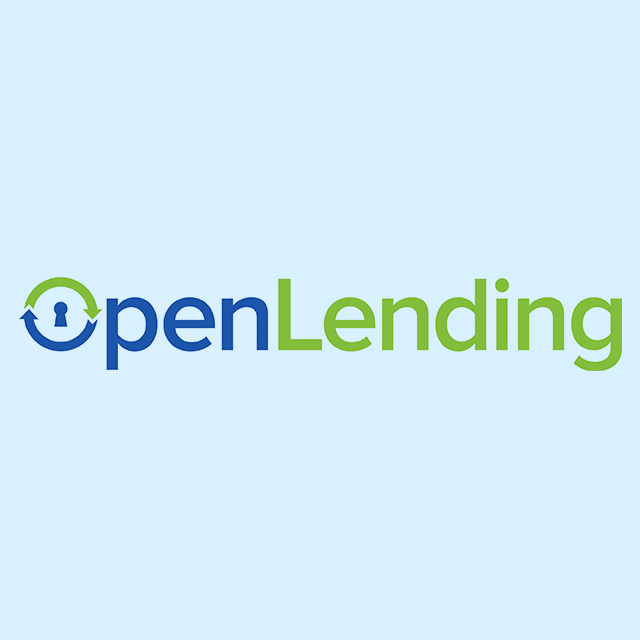Company Analysis Open Lending Corporation
1. Summary
Advantages
- The company's current efficiency (ROE=10.74%) is higher than the sector average (ROE=5.61%)
Disadvantages
- Price (5.17 $) is higher than fair price (1.61 $)
- Dividends (0%) are below the sector average (2.17%).
- The stock's return over the last year (-31.25%) is lower than the sector average (-24.09%).
- Current debt level 38.51% has increased over 5 years from 4.17%.
Similar companies
2. Share price and performance
2.1. Share price
2.2. News
2.3. Market efficiency
| Open Lending Corporation | Financials | Index | |
|---|---|---|---|
| 7 days | -7.8% | -8% | -2.2% |
| 90 days | -11.6% | -32.7% | 4.4% |
| 1 year | -31.3% | -24.1% | 27.6% |
LPRO vs Sector: Open Lending Corporation has significantly underperformed the "Financials" sector by -7.16% over the past year.
LPRO vs Market: Open Lending Corporation has significantly underperformed the market by -58.89% over the past year.
Stable price: LPRO is not significantly more volatile than the rest of the market on "NASDAQ" over the last 3 months, with typical variations of +/- 5% per week.
Long period: LPRO with weekly volatility of -0.601% over the past year.
3. Summary of the report
4. Fundamental Analysis
4.1. Stock price and price forecast
Above fair price: The current price (5.17 $) is higher than the fair price (1.61 $).
Price is higher than fair: The current price (5.17 $) is 68.9% higher than the fair price.
4.2. P/E
P/E vs Sector: The company's P/E (46.12) is higher than that of the sector as a whole (38.87).
P/E vs Market: The company's P/E (46.12) is lower than that of the market as a whole (49.05).
4.2.1 P/E Similar companies
4.3. P/BV
P/BV vs Sector: The company's P/BV (4.95) is higher than that of the sector as a whole (0.6466).
P/BV vs Market: The company's P/BV (4.95) is higher than that of the market as a whole (3.18).
4.3.1 P/BV Similar companies
4.4. P/S
P/S vs Sector: The company's P/S indicator (8.67) is higher than that of the sector as a whole (4.98).
P/S vs Market: The company's P/S indicator (8.67) is lower than that of the market as a whole (10.24).
4.4.1 P/S Similar companies
4.5. EV/Ebitda
EV/Ebitda vs Sector: The company's EV/Ebitda (30.39) is lower than that of the sector as a whole (40.82).
EV/Ebitda vs Market: The company's EV/Ebitda (30.39) is higher than that of the market as a whole (28.35).
5. Profitability
5.1. Profitability and revenue
5.2. Earnings per share - EPS
5.3. Past profitability Net Income
Yield Trend: Negative and has fallen by -24.52% over the last 5 years.
Accelerating profitability: The return for the last year (0%) exceeds the average return for 5 years (-24.52%).
Profitability vs Sector: The return for the last year (0%) exceeds the return for the sector (-15.99%).
5.4. ROE
ROE vs Sector: The company's ROE (10.74%) is higher than that of the sector as a whole (5.61%).
ROE vs Market: The company's ROE (10.74%) is higher than that of the market as a whole (10.67%).
5.5. ROA
ROA vs Sector: The company's ROA (5.9%) is higher than that of the sector as a whole (5.48%).
ROA vs Market: The company's ROA (5.9%) is lower than that of the market as a whole (6.44%).
5.6. ROIC
ROIC vs Sector: The company's ROIC (57.55%) is higher than that of the sector as a whole (5.05%).
ROIC vs Market: The company's ROIC (57.55%) is higher than that of the market as a whole (10.79%).
7. Dividends
7.1. Dividend yield vs Market
Low yield: The dividend yield of the company 0% is below the average for the sector '2.17%.
7.2. Stability and increase in payments
Unstable dividends: The company's dividend yield 0% has not been consistently paid over the past 7 years, DSI=0.
Weak dividend growth: The company's dividend yield 0% has been growing weakly or stagnant over the past 5 years. Growth over only 0 years.
7.3. Payout percentage
Dividend Coverage: Current payments from income (0%) are at an uncomfortable level.
8. Insider trades
8.1. Insider trading
Insider Buying Exceeds insider sales by 100% over the last 3 months.
8.2. Latest transactions
| Transaction date | Insider | Type | Price | Volume | Quantity |
|---|---|---|---|---|---|
| 19.10.2024 | Jehl Charles D See Remarks |
Purchase | 5.8 | 636 898 | 109 810 |
| 19.10.2024 | Lackey Sarah Chief Technology Officer |
Purchase | 5.8 | 53 076 | 9 151 |
| 19.10.2024 | Stark Matthew See Remarks |
Purchase | 5.8 | 106 152 | 18 302 |
| 05.08.2024 | Jehl Charles D See Remarks |
Purchase | 5.51 | 6 215 | 1 128 |
| 05.08.2024 | Lackey Sarah Chief Technology Officer |
Purchase | 5.51 | 1 670 | 303 |
Pay for your subscription
More functionality and data for company and portfolio analysis is available by subscription




